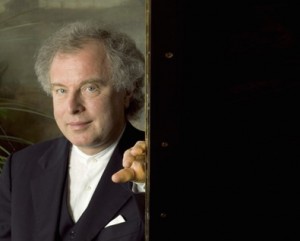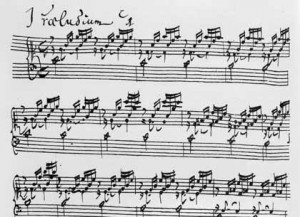Paul Lewis performs the Late Schubert Sonatas
The year of Schubert’s death, 1828, saw the birth of an extraordinary number of masterpieces from the pen of this master lyricist: the “Great” C major Symphony, the Mass in E-flat, the String Quintet in C, thirteen of his finest songs, and the final trilogy of great piano sonatas. This trilogy might be compared with the last three symphonies of Mozart. Each trilogy was written within a short period during the last year of its composer’s short life; each is a compact picture of its creator’s musical personality comprising three works of markedly differing character; each is a distillation of its composer’s last years of suffering and was written in a period of despair and deprivation; all the sonatas and symphonies are spacious in design, noble in concept and almost epic in scale; and each trilogy contains one stormy work in a prevailing minor key.
These sonatas also prompt thoughts on Beethoven’s last works in the genre, “final pronouncements of great minds,” as Ernest Porter puts it. “The sense of finality,” writes Porter, “is with us who cannot imagine any greater succeeding works and who perceive in these a summation of the composer’s output. Both had gone through trial and tribulation and the passions of sorrow and joy, and had arrived at that period when they could meditate on the inner meaning of life while still expressing its heights and depths. … The sequence of emotional thought is more highly controlled and resolved with persuasive logic.”
Schubert died before the sonatas were published. Diabelli published them only in 1838, with the dedication going to Schumann, an apt choice in light of his championship of Schubert’s music.
With regard to Schubert’s treatment of form, it is worth quoting Joseph Machlis’ observation on the sonatas in general: Schubert “was not the master builder Beethoven was. Inevitably he loosened the form, introducing into its flexible architecture the elements of caprice and whimsy, improvisation and inspired lyricism. His sonatas are spacious, fantasy-like compositions that display all the characteristics of the Schubertian style – spontaneous melody, richly expressive harmonies, rhythmic vitality, charming changes of key, emotion-charged shifts from major to minor, figuration that is almost always fresh and personal (with an occasional tendency to ramble), and great freedom in the handling of classical form.”
Piano sonata in C minor, D. 958
The opening subject of the C minor sonata – tragic, stormy and brusque – is often compared with the theme of Beethoven’s 32 Variations for Piano in the same key. The second subject, however, is a gracious, utterly beguiling melody in E flat major that only Schubert could have written, and probably the most memorable theme in the entire sonata. Yet Schubert devotes little time to it in the course of the first movement’s development section, preferring instead to focus on the defiant opening idea and even more so to a new, serpentine motif which becomes the predominant material of the development.
The Adagio opens with a solemn, hymn-like theme in four-part harmony in the key of A flat major. Two unsettled interludes, both derived from the same contrasting material in this A-B-A-B-A-form movement, interrupt the placid mood.
The Menuetto returns to C minor. The tempo marking of Allegro (rather brisk for a minuet) helps avoid what otherwise might have been a somber movement. The central Trio, reminiscent of a Ländler (a rustic Austrian dance in triple meter), has “Schubert” written all over it.
The finale is infused with a touch of the demonic. On paper, the rhythmic pattern suggests a tarantella (a lively Italian dance), but the effect in performance is closer to a gallop – of a ride to the abyss.
Piano Sonata in A major, D. 959
The A major sonata opens with a grand, majestic subject that breaks off at the end to introduce one of the movement’s most characteristic features, gentle cascades of triplets. Schubert extends both the opening subject and the triplets for some time, spinning out his lyric ideas with ineffable ease. Eventually he introduces the second subject, a serenely reposeful theme as notable for its simplicity as for its charm.
The slow movement is a three-part structure. A gently rocking theme of almost hypnotic power slowly unfolds in F sharp minor. By contrast, the central section is highly dramatic, full of clashing dissonances, long trills, chromatic scales and rumbling bass.
The Scherzo is one of Schubert’s most delightful, and its lighthearted, bouncy mood all the more welcome after the seriousness of the two preceding movements.
The long rondo-finale reveals Schubert at his most endearing and congenial, calling to mind Schumann’s famous comment about Schubert’s C major Symphony: music of “heavenly length.”
Piano sonata in B flat major, D. 960
Olympian in scope, expansive yet coherently organized in its concern for proportion and balance, saturated with gorgeous lyricism and often discussed in terms of hushed reverence by its admirers, the B flat sonata stands as a landmark in the history of musical achievements. The first movement opens with one of Schubert’s most heavenly themes – a tender, reflective progression of smoothly-connected chords suggesting vast spaces and extended time spans. The sublime beauty of this theme is underscored by its utter simplicity. It closes on a low, mysterious trill, as if from a distant region. Three more times we hear the theme, each one slightly altered, but no less ingratiating. “Schubert’s piano melodies are not involved with struggles, metamorphoses and chasms,” said pianist Jörg Demus; “they wander along with gentle corpulence – likenesses of their creator – through the musical keys as through countrysides, changing by means of an apparently abrupt harmonic inflection, appearing suddenly in another light and assuming a new countenance from one measure to another.”
The deeply contemplative second movement is no less sublime than the first, but is cast in a simple A-B-A mold. The accompaniment consists of a constantly repeated four-note figure that in itself contributes to the music’s hypnotic effect.
After two long and profound movements, some lighthearted relief is needed. This Schubert provides in the form of an elfin Scherzo in which the single theme darts about, touching briefly on various keys. The brief central Trio relies on syncopation and a darker mood for its effect.
The finale’s main theme is announced by a one-note “call to attention,” which is associated with the theme upon nearly every subsequent appearance in the movement. On and on flows the music, propelled by endlessly repeated rhythmic patterns and a natural power of melodious invention.
Program notes by Robert Markow, 2012.




